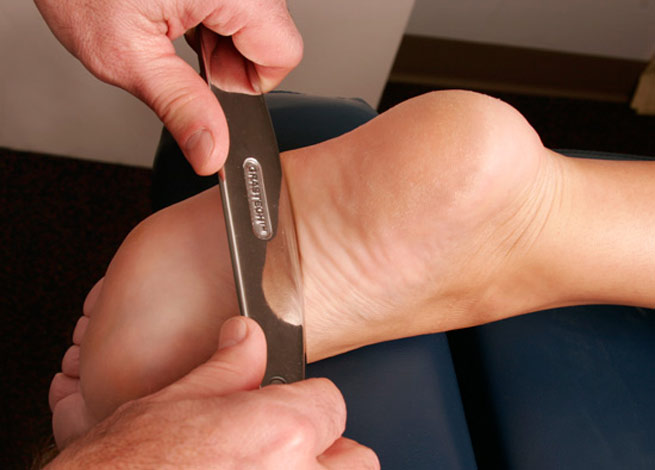November 26th, 2012
A Recommendation from your Philadelphia Personal Trainer: Techniques to Rehabilitate Overworked Tendons (Plantar Fasciitis)

The Symptoms
Plantar fasciitis is a common syndrome that affects a person’s ability to walk due to pain and tenderness on the bottom of the foot, towards the heel. The plantar fascia is the tendon which anchors the muscles along the arch of a person’s foot, and runs forward through the arch to the base of the toes. Plantar fasciitis involves this tendon becoming enlarged and painful. Plantar fasciitis is generally caused by overwork of this tendon, leading to many microscopic tears in its tissue that fail to heal properly. Over time, these build up into thicker lesions of scar tissue-like fiber which are both less flexible than true tendon tissue and more prone to pain when stressed.
The most common symptom of plantar fasciitis is significant pain along the heel and arch of the foot, especially in the morning after waking up. This can lead to difficulty in running long distances or, in more extreme cases, even walking normally. Other symptoms include a difficulty bending the toes upwards, towards the shin, and it can also lead to other soft tissue pains further up on the leg, such as in the knee.
The Solution
There are few direct medical cures for this condition, as use of surgery to correct it is rare. Generally, the prescribed treatment only involves inflammation-reducing pain medications, ice, rest, and often massage therapy. This makes it a prime candidate for treatment with the Graston Technique. With its emphasis on precision through the use of custom tools, the Graston Technique is a quicker technique in healing the plantar fascia than traditional massage therapies.
The key to using the Graston Technique to treat this foot condition lies in using the patented tools to massage, relax, and ultimately break up the fibrous lesions that are impeding proper movement in the plantar fascia. For a small, sensitive area like the foot, only the smallest and most precise tools would be used. The licensed Graston Technique practitioner would carefully probe along the tendon, feeling for those lesions.
Once located, the Graston Technique therapist would then use harder, digging-type motions to manipulate and break apart the lesions. Once they are broken up, they stop impeding the movement of the foot and allow the tendon to re-heal naturally, building up healthy soft tissue rather than scar tissue. Coupled with rest and stretching exercises, the plantar fascia would soon be healed, leaving the patient able to walk and run normally again.
Generally, the patient will undergo two Graston Technique sessions a week for several weeks, until the tendon is fully healed. There is usually noticeable improvement by the third or fourth session. While these sessions can be moderately uncomfortable and some temporary bruising may occur, no pain management beyond standard over-the-counter medicines is necessary.
The Graston Technique has been shown to be highly effective in treating soft tissue ailments such as plantar fasciitis. Through its use of precision tools, it can break up the debilitating tendon lesions more quickly and accurately than other forms of massage therapy. With more than 13,000 therapists worldwide making use of the Graston Technique, it is easy for someone suffering from plantar fasciitis to get therapy to help them speed their recovery.
Dr. Jonathan Crooker of Bryn Mawr Wellness, LLC is one of the few practitioners of the Graston Technique in the area. If you have any further questions, please feel free to contact him at 610.520.2490.
Comments are closed.